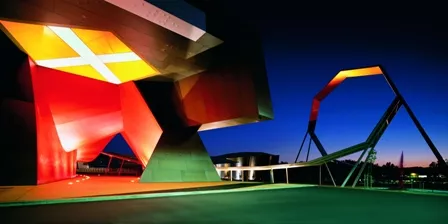With an overall goal to increase the number and size of association events being held in Australia, the Australia Associations Project will bring the strengths of Australia’s destinations together, and align them with Australia’s national economic development objectives.
Project Manager Julie Sheather says “We are inviting associations to discover what they don’t know about meeting in Australia, and how our expertise can help them deliver deeper and more relevant programs for their members.
“The establishment of the Australia Associations Project is testament to the high regards associations have in Australia,” says Sheather, “it’s a very exciting initiative.”
The project is a collaboration between the Australian Government through Tourism Australia and Australia’s leading convention bureaus and centres. Launched in May 2010, over $ 1.8 million will be invested into the three year project.
Australia’s unique strengths
Andrew McEvoy, Managing Director at Tourism Australia, explains that the project will showcase Australia’s unique strengths for association meetings.
The project will provide associations with access to Australia’s leading convention centres and bureaus, and also to the resources that the Australian Government and industry leaders can offer.
McEvoy says “We offer association executives a meeting destination with world-class event facilities, transport and accommodation, along with access to the world’s leading minds across fields such as information and computer technology, finance, biotechnology and advanced manufacturing.
“Australia is consistently ranked in the top 20 destinations for international association meetings by the International Congress and Convention Association, hosting thousands of the world’s leading thinkers, experts and innovators in industries as diverse as medical, manufacturing, agriculture, automotive, arts and environment.
“It’s all about making association events in Australia as easy as possible for organisers, from choosing the destination for the event, to selecting event organisers and venues to travel and itinerary options.”
The project aims to increase the number of association events in Australia through supporting Australian-based associations to grow their events nationally and increase their presence internationally, as well as through attracting new international associations to hold events in Australia.
International appeal
A specific focus of the project is on maximising the potential of the Asia Pacific for Australia’s business events sector.
“Research shows that the growing middle and professional classes in Asia are leading to a huge growth in associations and their membership numbers. Australia is an ideal location for their meetings – we are geographically close, can offer world class meeting facilities and have strong business links to the region,” says McEvoy.
“As association meetings generally have long lead times, we’re hoping that the new project will ensure Australia’s inclusion on the destination ‘shopping list’ for international association executives planning their conferences and meetings years in advance.”
For Amanda Anker from the Sydney Convention and Exhibition Centre (SCEC), the message is simple. “It’s about reminding the world that we have beauty AND brains!”
Co-operation the key to success
This is the first time that all stakeholders have collaborated together to take a co-ordinated national approach to strategically marketing Australia’s strengths to the local and international associations market.
“A whole of country approach to this sector is the key to making it work,” says McEvoy. “It means everyone involved has a shared primary aim of keeping existing association events in Australia and bringing new ones here.”
For Tourism Australia, the project reflects the government’s priorities to bring business events to Australia to support local businesses and communities.
Anker believes that all Australian cities will benefit if the project can achieve its aims.
As a national approach, the project sees Australia’s normally competitive bureaus and centres come together. “Where the overall goal is the same for all parties, we work together extremely well,” says Anker.
“We all recognised that none of us could benefit as individual destinations until Australia had a better profile internationally.”
From the SCEC’s perspective, Anker comments that while the centre holds many of the large international conferences that come to Australia, approximately 70–80 per cent of their association business is national – a figure which Anker says has grown extraordinarily over the past few years.
On the international front, she says business is becoming much more competitive as new destinations open up and new convention centres are built and/or expanded.
“Once an association makes the decision to come to Australia,” Anker concludes, “then we enter the competitive arena and it’s every destination for itself!”
- Emily Hollosyhttps://thirdsector.com.au/author/emily-hollosy/
- Emily Hollosyhttps://thirdsector.com.au/author/emily-hollosy/
- Emily Hollosyhttps://thirdsector.com.au/author/emily-hollosy/
- Emily Hollosyhttps://thirdsector.com.au/author/emily-hollosy/











